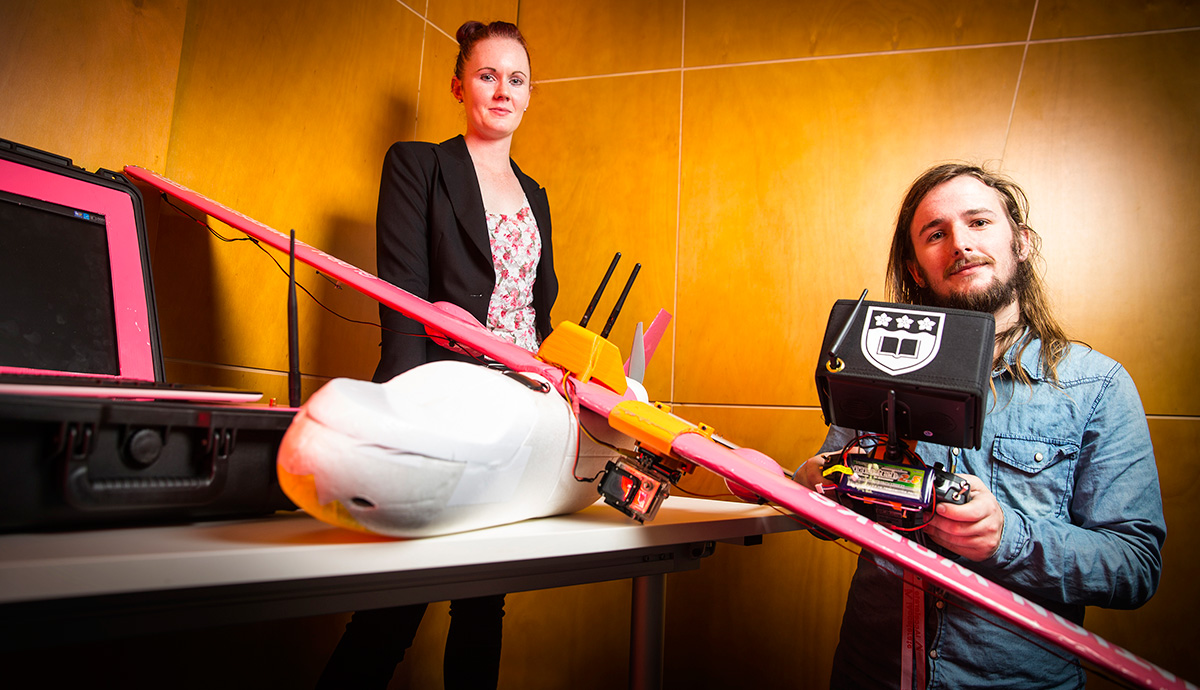September 1, 2015
Engineering students create unmanned search and rescue aircraft
A love of fast cars and powerful engines has led a pair of students to develop a new search and rescue tool.
Mechanical engineering students Sally Reynolds and Nathan Tarlinton have developed an unmanned aircraft that can search for missing persons, while saving time and resources.
The aircraft, which recently won UOW Global Challenges’ annual student prototyping competition Innovation Works!, can fly up to 110 kilometres per hour in treacherous weather and enables access to areas with difficult terrain.
Rather than deploying expensive aircraft and highly trained personnel, the device is fitted with thermal and optical cameras and can be remotely controlled from a base station. Once the missing person is located, a GPS system provides the exact coordinates to emergency response teams.
“We saw a huge gap in the market for this type of technology in search and rescue operations,” Sally said.
“Unmanned aircraft are becoming increasingly popular for hobbyists and technology enthusiasts, so we saw the opportunity to put the technology to good use by making a relatively simple product that was executed well.”
In designing the aircraft, the pair made use of technologies and support provided as part of the Innovation Works! Competition from UOW’s Australian Institute for Innovative Materials, including 3D printers to produce custom camera mounts and guards.
“What we couldn't make, we purchased off-the shelf,” Sally said. “But the real challenge was in assembling the system and networking the on-board elements (the thermal camera, optical camera, GPS and transmitter) to the ground station and remote control unit.
“We also had to effectively mount all these elements on the airframe and ensure that the aerodynamics of the unit were not compromised.”
The aspiring engineers are now working to get an exemption from the normal unmanned aircraft regulations and hope to pitch the product to emergency service outlets in the near future.
Nathan said hands-on programs like Innovation Works! was “immensely valuable” to students.
“Problem-solving projects like this one force you to think about the entire process, from start to finish, and to develop your own testing and validation methods.
“It's a very different challenge to solving a question from a textbook, and it teaches you to be realistic about how your design translates from paper to the real world.”
It was a love of fast cars and building something useful from scratch brought the two together.
“Fast cars have a lot more in common with planes than you'd think,” Nathan, who led UOW’s 2013 FSAE team in designing, building and racing a formula-one style race car in the national championships, said.
Nathan and Sally are currently involved in the Australian Formula 3 Drivers Championship as race engineers and Sally has even scored herself a coveted graduate position for 2016.
As a result of coming runner-up in UOW Pitch last year, Nathan has also created a startup business developing sensor technology for use in motorsport as a low-cost alternative to current options.
He hopes to grow his business as a graduate engineer, while commercialising the search and rescue aircraft.
